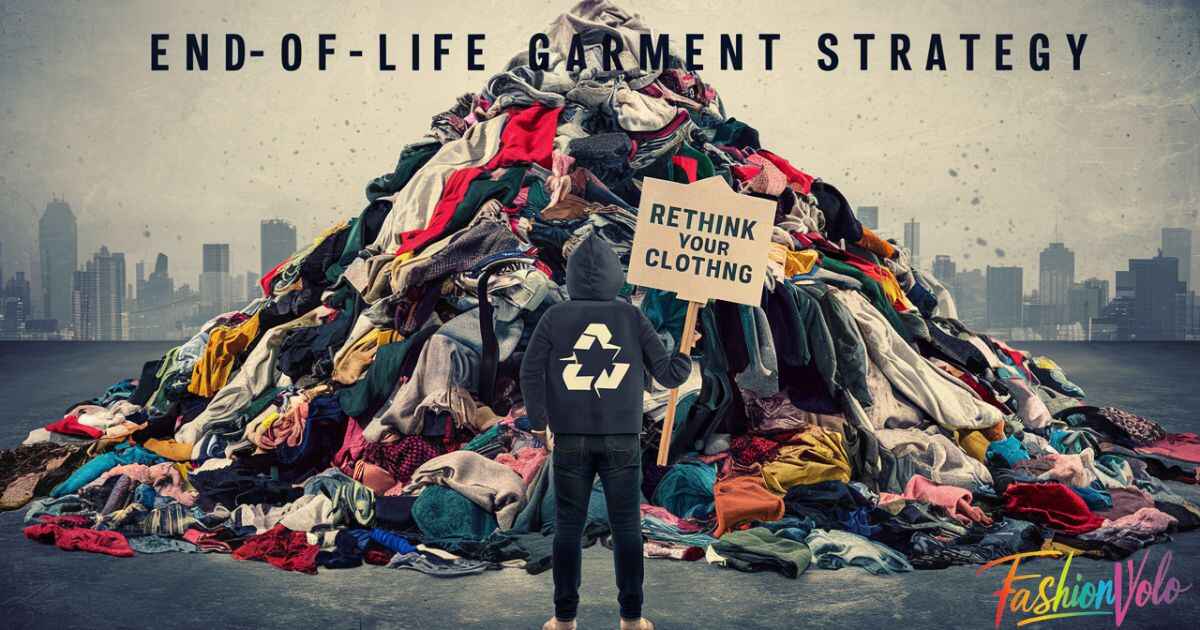In the world of fashion, there’s curiosity about whether Aritzia counts as fast fashion. Aritzia, a big name in Canada, is known for its trendy styles and decent quality. Some might think its quick turnover and affordable prices make it fast fashion.
But looking deeper, Aritzia stands out for its focus on ethical sourcing and sustainability. Unlike typical fast fashion, Aritzia prioritizes lasting style over disposable trends. So, while it might share some traits with fast fashion, Aritzia’s commitment to longevity and responsibility sets it apart.
What is Fast Fashion?
Fast fashion refers to the rapid production of clothing by retailers in response to the latest trends, often resulting in inexpensive garments made with low-quality materials. These clothes are designed to be quickly and cheaply manufactured, allowing retailers to swiftly move from runway to store shelves.
- Rapid production of clothing in response to trends
- Emphasis on low-cost manufacturing
- Often results in low-quality garments
- Designed to be disposable rather than durable
- Contributes to environmental issues such as pollution and waste
- Critics argue it exploits labor in developing countries
- Fast fashion companies frequently offer new styles at a rapid pace, encouraging frequent purchases.
Critics argue that fast fashion exploits labor in developing countries where garments are often produced. Despite its popularity among consumers seeking affordable and trendy clothing options, the fast fashion industry is increasingly facing scrutiny for its ethical and environmental implications.
Aritzia’s Branding and Ethical Position
As conscious consumerism gains traction, brands like Aritzia find themselves under scrutiny. What do they stand for? Let’s delve into their brand philosophy:
- History: Aritzia, founded in 1984 in Vancouver, Canada, has evolved from a single boutique into a leading fashion retailer known for its trendy designs and high-quality clothing.
- Brand Identity: Aritzia’s brand identity revolves around modernity and sophistication, appealing to fashion-conscious consumers with its unique and desirable shopping experience.
- The Ethical Standpoint: Aritzia prioritizes ethical sourcing and sustainable practices, ensuring transparency in its supply chain and advocating for fair labor practices, reflecting its commitment to social and environmental responsibility.
Transparency in Manufacturing: Aritzia emphasizes transparency in its manufacturing process, striving to provide customers with insight into where and how their garments are produced, reinforcing its commitment to ethical and responsible practices.
Is Aritzia Fast Fashion? Benchmarks for Comparison
Determining if Aritzia is fast fashion involves assessing factors such as its production turnover, pricing strategies, and commitment to sustainable practices compared to typical characteristics of fast fashion retailers.
Pricing Structure
Aritzia’s pricing structure revolves around offering affordable yet quality clothing, making trendy fashion accessible to a wide range of consumers. They often provide various price points to cater to different budget levels while maintaining their reputation for stylish and well-made garments.
Aritzia occasionally offers sales and promotions, allowing customers to obtain their favorite pieces at discounted prices. This approach enhances the brand’s appeal, attracting bargain hunters without compromising on the quality and integrity of their products.
Production Speed
Aritzia’s production speed refers to how quickly it brings new clothing collections to market. This involves designing, manufacturing, and distributing garments to stores or online platforms in a timely manner to meet consumer demand for trendy fashion items.
Aritzia aims to maintain a relatively swift production speed to keep up with the fast-paced nature of the fashion industry. By efficiently turning around new designs and releasing them to the market promptly, the brand stays competitive and appeals to customers seeking the latest trends.
Quality and Durability
Aritzia prioritizes quality and durability in its clothing, ensuring that each garment is crafted with attention to detail and made from long-lasting materials. Their commitment to durability means that customers can expect their clothing to withstand wear and tear, resulting in pieces that remain stylish and functional over time.
Aritzia’s dedication to quality extends beyond individual garments; it encompasses their overall approach to design and production. By focusing on durability, Aritzia aims to reduce the need for frequent replacements, promoting sustainability and offering customers value for their investment in their wardrobe.
Sustainability Practices
Aritzia integrates sustainability practices into its operations by prioritizing eco-friendly materials and reducing its environmental footprint. Through initiatives like sourcing organic cotton and implementing energy-efficient processes, Aritzia strives to minimize its impact on the planet.
Aritzia is committed to ethical labor practices, ensuring fair wages and safe working conditions for factory workers. By promoting social responsibility throughout its supply chain, Aritzia aims to create positive change within the fashion industry and beyond.
Waste Management
Aritzia takes waste management seriously by implementing strategies to minimize waste throughout its supply chain, including reducing excess packaging and repurposing materials.
Aritzia encourages responsible consumption among its customers by offering repair services, recycling programs, and promoting the longevity of their garments. Through these initiatives, Aritzia strives to create a culture of mindful consumption and waste reduction within the fashion industry.
Aritzia vs The Fast Fashion Model

Aritzia distinguishes itself from the fast fashion model by prioritizing slower production turnover with timeless styles, offering higher-priced clothing made with quality materials, and emphasizing ethical sourcing and sustainable practices
| Aspect | Aritzia | Fast Fashion Model |
| Production Turnover | Emphasizes slower production turnover, focusing on timeless styles | Prioritizes rapid turnover of collections to keep up with fleeting trends |
| Pricing Strategy | Offers higher-priced clothing made with quality materials | Offers lower-priced clothing made with cheaper materials |
| Ethical Practices | Prioritizes ethical sourcing and sustainable practices | Often criticized for poor labor conditions and environmental impact |
Product Turnaround and Trends
- Fast Fashion Example: An example of fast fashion is brands like Zara and H&M, which produce trendy clothing at rapid speeds and low costs, often sacrificing quality and ethical practices for quick turnover and affordability.
- Aritzia’s Approach: Aritzia’s approach involves prioritizing quality and durability in clothing production, while also emphasizing ethical sourcing and sustainability practices, setting it apart from conventional fast fashion retailers.
Pricing Strategy
- Fast Fashion Example: Fast fashion brands like Zara and H&M employ a low-cost pricing strategy to attract consumers, offering trendy clothing at affordable prices by using cheaper materials and prioritizing mass production.
- Aritzia’s Approach: Aritzia’s pricing strategy focuses on offering higher-priced clothing made with quality materials, reflecting the brand’s commitment to durability and value for customers seeking timeless styles over disposable trends.
Material Sourcing
- Fast Fashion Example: Fast fashion brands often source materials from low-cost suppliers without regard for environmental or ethical considerations, prioritizing affordability and quick production turnover over sustainability and quality.
- Aritzia’s Approach: In Aritzia’s approach, material sourcing prioritizes quality and sustainability, ensuring that garments are made from ethically sourced materials. Aritzia aims to reduce environmental impact and promote transparency throughout its supply chain.
Production Practices
- Fast Fashion Example: Fast fashion brands like Zara and H&M employ rapid and often exploitative production practices to churn out trendy clothing at low costs, prioritizing speed over ethical considerations, leading to environmental degradation and labor exploitation concerns.
- Aritzia’s Approach: Aritzia prioritizes ethical production practices, ensuring transparency and fair labor conditions throughout its supply chain. By emphasizing responsible manufacturing, Aritzia maintains a commitment to quality and sustainability in its fashion production processes.
Brand Messaging and Marketing
- Fast Fashion Example: Fast fashion giants like Zara and H&M employ aggressive marketing tactics, leveraging social media and influencer partnerships to promote their rapid turnover of trendy collections at budget-friendly prices, targeting style-conscious consumers seeking instant fashion fixes.
- Aritzia’s Approach: Aritzia’s approach to brand messaging and marketing focuses on conveying its commitment to quality, style, and sustainability, resonating with fashion-conscious consumers seeking timeless and ethically sourced clothing options.
Where Aritzia Falls Short on Sustainability
Aritzia faces challenges in achieving complete sustainability, particularly in areas like supply chain transparency and reducing environmental impact. While it emphasizes sustainability, there’s room for improvement to fully align with its goals. Addressing these challenges is essential for Aritzia to enhance its sustainability efforts effectively.
Transparency in Supply Chain
Aritzia emphasizes transparency in its supply chain, striving to provide customers with insight into where and how their garments are produced. By disclosing information about sourcing and manufacturing, Aritzia aims to build trust with consumers and demonstrate its commitment to ethical practices.
Transparency in the supply chain allows Aritzia to identify and address potential issues, such as labor exploitation or environmental concerns, ensuring accountability throughout the production process. This transparency helps Aritzia maintain integrity in its operations and align with its values of ethical sourcing and sustainability.
Use of Mixed Materials
- Aritzia utilizes mixed materials in its clothing designs to achieve unique textures and visual interest.
- Combining different fabrics allows Aritzia to create versatile garments with varied aesthetics.
- The use of mixed materials enhances the quality and durability of Aritzia’s clothing, ensuring long-lasting wear.
- Incorporating diverse materials, Aritzia offers customers a wide range of styles suitable for various occasions and preferences.
Vague Sustainability Goals
Aritzia’s sustainability goals lack clarity and specificity, making it difficult to assess the effectiveness of its initiatives in reducing environmental impact and promoting ethical practices. Without clear targets and measurable outcomes, it’s challenging for Aritzia to track progress and hold itself accountable for its sustainability efforts.
The ambiguity surrounding Aritzia’s sustainability goals may lead to skepticism among consumers and stakeholders, who seek transparent and concrete commitments from the company. Clear and actionable sustainability goals are essential for Aritzia to demonstrate its genuine commitment to environmental and social responsibility.
Limited Use of Organic Materials
Despite promoting sustainability, Aritzia’s use of organic materials remains limited, with a majority of its clothing still made from conventional fabrics. Incorporating more organic materials into its collections could enhance Aritzia’s sustainability efforts and reduce its environmental footprint.
Aritzia has taken steps to increase the use of organic cotton and other sustainable fabrics in some of its collections, reflecting a growing awareness and commitment to sustainable practices within the brand. Yet, there’s potential for further expansion in integrating organic materials across its entire product range to strengthen its sustainability initiatives.
End-of-Life Garment Strategy
Aritzia implements end-of-life garment strategies by offering repair services and encouraging customers to recycle their clothing through designated programs. By extending the lifespan of their garments, Aritzia reduces waste and promotes sustainability in the fashion industry.
Aritzia educates customers on responsible disposal methods, such as donating unwanted clothing to charity or repurposing fabrics for new projects. These initiatives contribute to Aritzia’s commitment to minimizing its environmental footprint and fostering a culture of sustainable consumption.
Navigating the Grey Areas in Fashion Branding
Navigating the grey areas in fashion branding involves balancing creativity with ethical considerations and consumer expectations. It requires brands to make conscious decisions that align with their values while staying relevant in a rapidly evolving industry. Successfully navigating these complexities can strengthen brand identity and foster trust among consumers.
Ambiguous Terminologies: Ambiguous terminologies in fashion, such as “eco-friendly” or “natural,” lack standardized definitions, leading to confusion among consumers. Clear and transparent communication from brands is crucial to ensure authenticity and trustworthiness in addressing environmental and ethical concerns.
Ethical vs. Sustainable: Ethical fashion focuses on fair labor practices and worker rights, ensuring humane working conditions and fair wages. Sustainable fashion prioritizes environmental responsibility, aiming to minimize resource use, pollution, and waste throughout the supply chain. They address different aspects of social and environmental impact within the industry.
Limited Edition Collections: Limited edition collections in fashion feature unique designs produced in limited quantities, creating a sense of exclusivity and desirability among consumers, often driving immediate purchase decisions. These collections are typically not restocked once sold out, enhancing their allure and value to fashion enthusiasts.
Recycling Initiatives: Recycling initiatives in fashion involve repurposing materials from discarded garments to create new clothing items or accessories, reducing waste and promoting sustainability. Brands often partner with recycling programs or offer incentives for customers to return their old clothing, contributing to a circular economy and minimizing environmental impact.
Vegan but not Sustainable: While vegan fashion may exclude animal-derived materials, it doesn’t necessarily guarantee sustainability, as other factors like production processes and material sourcing can still contribute to environmental harm. Consumers should consider additional aspects beyond veganism, such as ethical labor practices and environmental impact, to ensure a truly sustainable purchase.
Transparency Reports: Transparency reports in fashion provide insight into a brand’s practices, including its supply chain, environmental impact, and ethical standards, fostering trust and accountability among consumers. By openly sharing this information, brands demonstrate their commitment to transparency and encourage informed decision-making by consumers.
Frequently Asked Questions
Is Aritzia considered fast fashion?
Aritzia exhibits some characteristics of fast fashion, but it distinguishes itself by prioritizing quality, sustainability, and ethical practices.
Does it prioritize rapid turnover of collections?
It focuses on timeless styles rather than rapid turnover, offering high-quality clothing made to last.
Does Aritzia offer affordable clothing made with low-quality materials?
While it’s pricing may vary, it generally offers higher-priced clothing crafted from quality materials, unlike typical fast fashion brands.
Is Aritzia committed to ethical sourcing and sustainability?
Yes, Aritzia emphasizes ethical sourcing and sustainability practices, including transparency in its supply chain and efforts to reduce environmental impact.
Does Aritzia promote disposable trends or enduring style?
It prioritizes longevity in style over disposable trends, encouraging customers to invest in timeless pieces rather than chasing fleeting fashion fads.
Final Words
Aritzia shares some traits with fast fashion but stands apart by prioritizing quality and sustainability. While it doesn’t adhere strictly to the rapid turnover model, it offers trendy clothing with a focus on durability. Aritzia’s pricing varies, but it generally offers higher-priced items made from quality materials, unlike typical fast fashion brands.
The company emphasizes ethical sourcing, transparency in its supply chain, and sustainability practices, including efforts to reduce environmental impact. Unlike fast fashion’s disposable trends, Aritzia promotes timeless styles, encouraging customers to invest in pieces that last. While it may exhibit certain fast fashion characteristics, Aritzia’s commitment to quality, sustainability, and ethical practices sets it apart, making it a more responsible choice for fashion-conscious consumers.














id excepturi blanditiis enim quasi est deleniti. quod voluptatem debitis nesciunt nulla numquam aut accusamus similique. quis molestias expedita ducimus qui modi.
sit dolor inventore aliquam est eum quos odit excepturi est laboriosam animi sed totam enim sed velit. est est totam consequatur itaque nostrum libero mollitia necessitatibus aut sint quam et laudanti